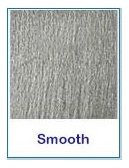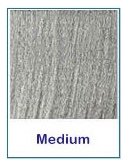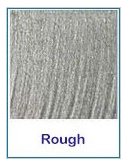Waterjet cutting at ALIND can process various metals, including:
- Aluminum(gr1100,2024,3003,6061,7075)
- Brass
- Bronze
- Copper
- Stainless Steel(gr304,304L,316,316L,321,Duplex 2205,Duplex 2507)
- Mild Steel-higher than 10mm thick
- Carbon Steel (grEN8,EN24 steels)
- Alloys of Steel
- Tool Steel (grA2,D2,P20 tool steels)
- Titanium
- Inconel
ALIND’s waterjet cutting services can handle a wide range of commonly used non-metal materials, including:
- Composites (carbon fiber, fiberglass, Kevlar)
- Plastics (acrylic, PVC, polycarbonate, polyethylene, polypropylene)
- Rubber (neoprene, silicone, EPDM)
- Foam (polyurethane, polyethylene, polystyrene)
- Laminates (HPL high-pressure laminate, melamine)
- Solid Surface
- Glass (Annealed, laminated)
- Stone (granite, marble, Italian marble,Onyx, Artificial)
- Ceramic and Vitrified tiles
This list represents common non-metal materials that can be processed using waterjet cutting technology. If you have a specific material not listed here, please contact ALIND to discuss the feasibility of using waterjet cutting for your project.
Cutting Finishes with Waterjet Cutting
Select the Perfect Finish for Your Project: Smooth, Medium, or Rough
Waterjet cutting is renowned for its versatility, allowing you to choose the perfect finish for your project. At ALIND, we offer three distinct cutting finishes: smooth, medium, and rough. Each finish has unique characteristics, taper, and roughness, enabling you to choose the most suitable option based on your requirements and preferences. Explore the differences between each cutting finish to make an informed decision for your project.
Smooth Finish
The smooth finish offers the highest precision and the least amount of taper and roughness, making it ideal for intricate designs and high-tolerance components. This finish is achieved by reducing the cutting speed and using finer abrasive particles. Due to slow feed rate,the time for cutting is more and so the cost of cutting for smooth finish is higher than Medium finish cutting.
- Taper: Minimal-0.1 to 0.3mm (less than 0.5 degrees)
- Roughness: Very low (Ra 1.6 – 3.2 μm)
Medium Finish
The medium finish provides a balance between cutting speed and surface quality. This finish is suitable for a wide range of applications where a moderate level of precision and surface roughness is acceptable. The time for cutting is lesser than smooth cutting finish and hence costs less than Smooth cutting finish.
- Taper: Moderate-0.2 to 0.4mm (0.5 – 1 degree)
- Roughness: Moderate (Ra 3.2 – 6.3 μm)
Rough Finish
The rough finish prioritizes cutting speed, resulting in a faster production time but with a higher degree of taper and surface roughness. This finish is ideal for projects where surface quality is not a critical concern. Suitable for further machining. As cutting is done at higher feed rate, the cutting time is reduced a lot and hence rough finish cost lot lesser than Medium cutting finish.
- Taper: Higher-0.3 to 0.5mm (1 – 2 degrees)
- Roughness: High (Ra 6.3 – 12.5 μm)
Conclusion:
Selecting the appropriate cutting finish for your project is crucial for achieving the desired outcome at least possible cost. At ALIND Waterjet Cutting, we offer smooth, medium, and rough finishes to cater to various requirements and preferences. Whether you need a high-precision, smooth finish or a faster, rougher finish, our team is ready to deliver the perfect solution for your project. Contact us today to discuss your cutting finish requirements and receive a quote.




